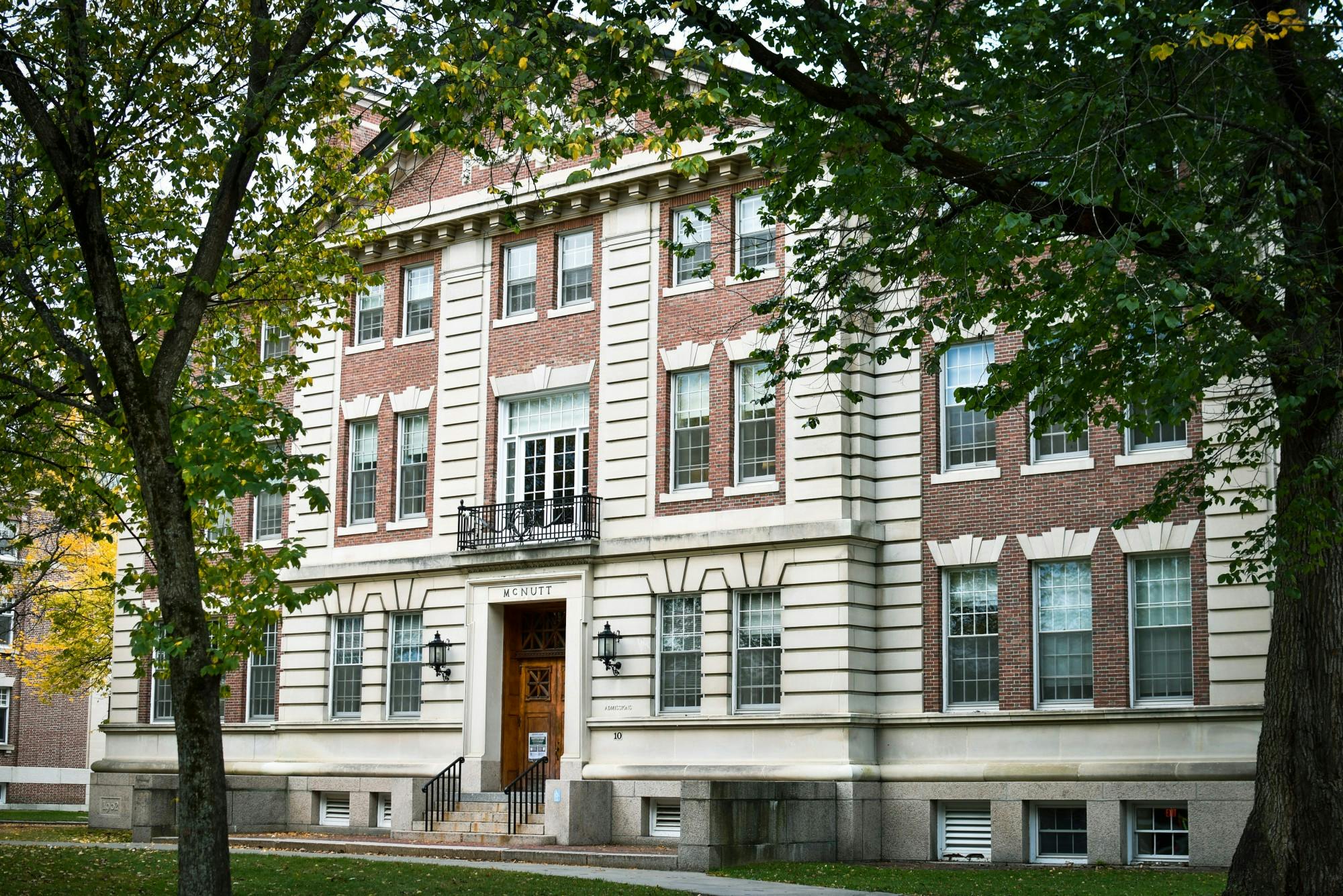On June 7, College President Phil Hanlon ’77 announced that the College’s Call to Lead campaign — a community fundraising effort aimed at developing educated leaders — reached more than $3.7 billion in gifts and 60% undergraduate alumni participation, according to the Call to Lead website. Call to Lead is the first higher education campaign in history to reach these milestones.
The campaign began in 2014 and will end on June 30, according to the website. All five schools — the College, Geisel School of Medicine, the Guarini School of Graduate and Advanced Studies, Thayer School of Engineering and the Tuck School of Business — contributed, with Tuck reaching 81% alumni participation. Throughout its run, Call to Lead focused on the College’s “distinctive foundational strengths,” including engagement between students and faculty, liberal arts education and research, the website states.
“Our community’s historic accomplishment — a campaign with $3.7 billion in commitments to date and 60 percent alumni participation — is a resounding affirmation of the core values that define Dartmouth and our aspirations for the future,” Hanlon wrote in the website’s announcement. “Ultimately, our success is measured not by funds raised but by lives changed and the impact we are having on the world.”
In 2018, the College announced the Call to Lead Campaign. At the time, it had accumulated $1.4 billion during the “quiet phase” of fundraising that started in 2014. By November 2019, it had hit 75% of its goal of $3 billion. In 2021, the campaign surpassed $3 billion.
The campaign has left several lasting impacts on the College, according to the website. On one hand, Call to Lead’s leadership theme “inspired critical investments” in Dartmouth’s ability to solve global issues, as well as strengthened its pursuit of student leadership.
The campaign also improved Dartmouth’s financial aid offerings, according to the website. More than $500 million in gifts have been allocated to endowed scholarships, while the College eliminated required loans and committed to meeting all demonstrated need regardless of citizenship. Dartmouth is now one of seven U.S. institutions — along with Amherst College, Bowdoin College, Harvard University, the Massachusetts Institute of Technology, Princeton University and Yale University — to conduct need-blind admissions and meet 100% of demonstrated need, the announcement states.
Moreover, funds sparked new scholarships for foreign study, a core component of the Dartmouth experience. Currently, more than half of students participate in at least one study abroad program, according to the Global Dartmouth webpage. The College’s average first-year undergraduate financial aid package also rose by $20,000, from $47,000 to $67,000.
With improved financial aid, the College has seen improvements to yield and selectivity. Over the past eight years, Dartmouth’s yield rate increased 20%, from 50% to 70%. The College has also seen record-low acceptance rates in recent years, according to past reporting by The Dartmouth.
Throughout the campaign, Dartmouth has also added more than 500,000 square feet for academic, athletic and “student life” spaces — including Anonymous Hall, the Graham Indoor Practice Facility and the West End’s Class of 1982 Engineering and Computer Science Center. Funds also allowed major renovations to Dartmouth Hall, the Hood Museum of Art, the Hopkins Center for the Arts and the Outing Club House.
The effort also established the Irving Institute for Energy and Society, the Byrne Family Institute for Cancer Research, the Magnuson Center and the Wright Center for the Study of Computation and Just Communities — interdisciplinary programs meant to enhance learning and research. Gifts have also contributed to investments in diverse fields — such as arctic studies, Black intellectual life and tribal sovereignty — while the Academic Clusters Initiative recruited 30 new faculty members.
According to the announcement, Dartmouth’s “institutional strength” has witnessed notable improvements since the campaign began. In 2017, the Carnegie Commission on Higher Education deemed the College an R1 top-level research institution, and in 2019, Dartmouth joined the Association of American Universities — a group of 65 top U.S. research universities.
The campaign also reached remarkable levels of inclusivity, according to the announcement. In addition to “unprecedented giving” by alumni of color and international alumni, 115 women donated $1 million or more; 318 women offered $100,000 or more; and 2,712 contributed to Dartmouth Hall’s renovation. According to Board of Trustees Chair Emerita and campaign co-chair Laurel Richie ’81, the campaign’s inclusivity owes to its “Big Green, Big Tent” approach.
“In each individual gift, there is an act of faith, a vote of confidence and a conscious choice to invest in Dartmouth’s future,” Senior Vice President for Advancement Bob Lasher ’88 said in the announcement. “We can see that philanthropy powers positive change. I join with my campus colleagues and campaign volunteers in expressing our gratitude. It’s awe-inspiring.”
Correction Appended (June 9, 10:25 a.m.): A previous version of this article provided an incorrect number for how much additional square feet the College has dedicated for academic, athletic and "student life" spaces since the start of the Call to Lead campaign. The article has been updated.




